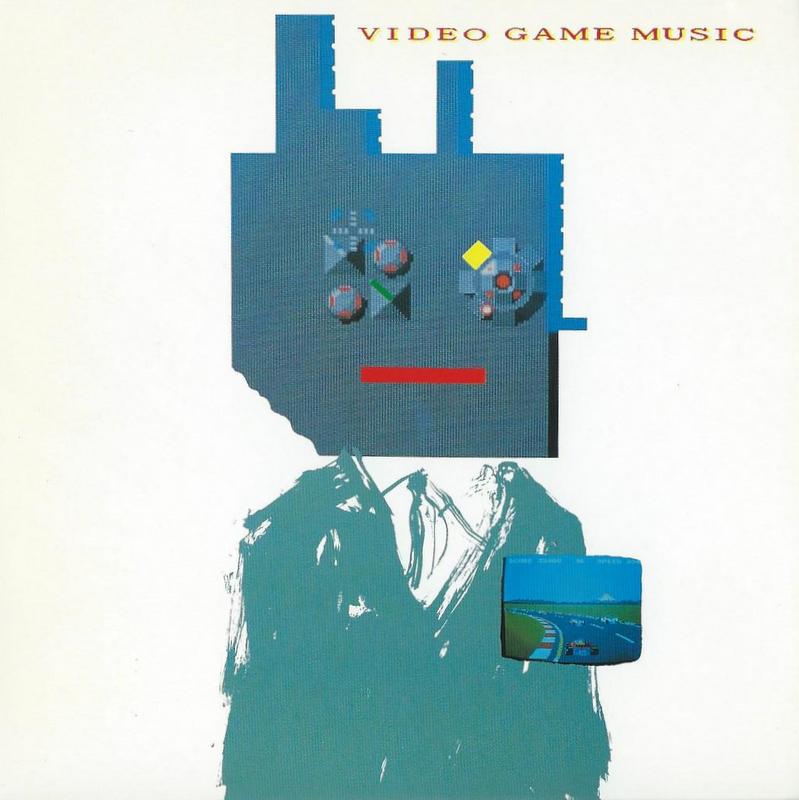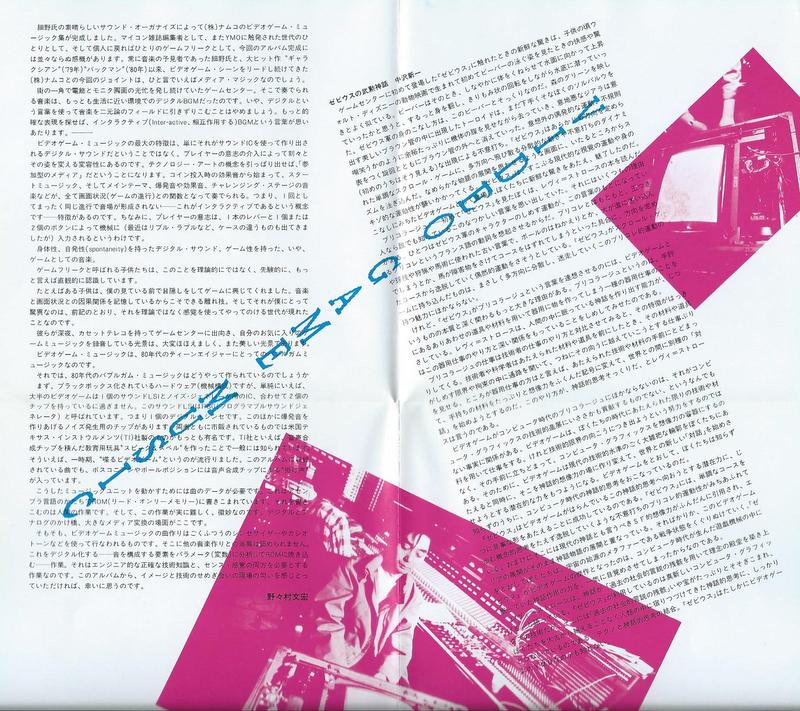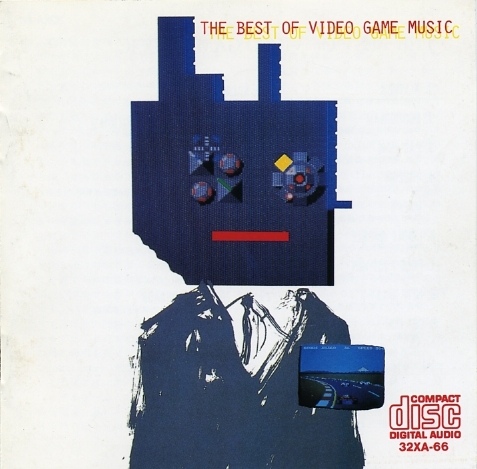Game Music Revue: Video Game Music (1984)
Since moving to Japan I have bought a lot of game music. Seriously, like probably too many. In my travels and adventures in buying these LPs and CDs, I’ve discovered that there isn’t a lot in the way of editorial information online in regards to these releases. Sure, there’s the VGMDB, but that’s just factual info on content, I mean reviews and more in-depth information.
While I don’t consider myself the end-all expert on game music (my lack of knowledge/interest in RPGs kind of makes that impossible) I’d like to think my obsessive collecting has given me some credence to talk about these releases. So I present to you the Game Music Revue, where I will take a look at all the crazy, bizarre and insane (as well as the boring, mundane and not very good) game music releases that I’ve bought and continue to buy in this wonderful country.
And I felt that it would be best to start at the beginning.

Video Game Music (Compilation)
- Composed by: Yuriko Keino, Nobuyuki Ohnogi and Toshio Kai
- Arranged by: Haruomi Hosono
- Released: April 25, 1984
- Label: Yen/Alfa Records
- VGMdb Information Page
There were game music releases before Video Game Music, but they were mostly singles or EPs. Any full-length album was a kid’s record that was more of a story record than actual music. If you want to talk abut game music albums, things start here. This is the very first album of video game music, hence its rather simple title.
Released in 1984, the album was the brainchild of Haroumi Hosono, who by 1984 was one of the biggest names in Japanese music, first as a member of the highly influential folk rock act Happy End, then as a solo artist, and finally as a member of the massively popular Yellow Magic Orchestra, also known as YMO. The group, which consisted of Hosono alongside Yukihiro Takahashi and Ryuichi Sakamoto (who would go on to win an Oscar for his work on the score to The Last Emperor) were true innovators, and were one of the first acts in the world to take electronic music and incorporate it into the pop landscape. Legit superstars in Japan with several hit singles and albums throughout the 80s, their catchy and wholly original take on electronic music and synthpop continues to serve as an influence to artists around the world to this very day.
They were also the first act to recognize the musical validity of game music. Their revolutionary 1978 debut album featured samples and reworkings of the arcade games Circus and Space Invaders, and they would later go on to start the GMO (Game Music Orchestra) record label in the mid-80s which released several amazing game music albums throughout the 80s and 90s. This release predates the formation of GMO, however, and was instead released on YMO’s other side-project label, Yen Records.
The original release (there are variations, which I’ll get to) features ten tracks:
- Xevious
- Bosconian
- Pac-Man
- Phozon
- Mappy
- Libble Rabble
- Pole Position
- New Rally-X
- Dig Dug
- Galaga
While the album title is Video Game Music, that’s a bit of a misnomer. Video Game Audio or Video Game Sounds may have been a bit more accurate, as there isn’t a lot of actual music on the album. I know that a lot of work went into this record; Hosono is credited as a producer, and there are several other names on the linear notes with titles like “supervisor” and “mixer,” but for the life of me I really can’t tell what they did with most tracks. Almost every cut on Video Game Music just sounds like audio taken directly from gameplay. The “Pac-Man” track, for example, is literally just three minutes of gameplay audio, starting with the opening jingle, followed by some gameplay audio, and ending with the sound of Pac-Man dying. Sure, it’s loyal to the original game, but it sure as hell doesn’t make for compelling listening material, and more abrasive tracks “Phozon” are downright intolerable thanks to their reliance on treble-heavy bleeps and bloops that sounded annoying back in 1984 and sure as hell haven’t aged well.

Original linear notes.
The two exceptions to this rather barebones approach are the first and last tracks, “Xevious” and “Galaga.” “Xevious” starts out like the other cuts, but about halfway through it dramatically changes pace and turns into a remix of the game’s audio. The opening jingle is looped, while sound effects are sampled and arranged in such a way as to create a discernible melody. It’s catchy and fun, and sounds kind of like the Art of Noise, with its heavy use of samplers and transforming random sounds into music.
Dude must have really dug Xevious.

Cover to the “Best Of Game Music” re-issue.
Two years later the album was re-released as The Best Of Video Game Music. This features the original Video Game Music album in its entirety, as well as seven tracks from the 1986 follow-up release The Return of Video Game Music. I’ve never seen one in any store in Tokyo, and I suspect it was not in print very long.
In 1996 the album was reprinted, but only for inclusion in the Yen Box Vol. 2, an 18 disc collection featuring a selection of albums that YMO released on their Yen Records label. This version is slightly different, however, as it includes the tracks from the Xevious 12″ single, bringing the total number of songs to 13. As far as I know, this version was only made available in this box set, which can go for over $600 these days, so good luck.
The most recent re-release of the album came in 2001, when game music label Scitron repressed the original release (with none of the bonus cuts from the Yen Box version). Strangely, while I occasionally see the original CD pop up in stores from time to time, I’ve never seen this reprint. If the other Scitron reprints I’ve come across are any indication though, it’s probably nearly indistinguishable from the original version.
This album is not available digitally in any region, so if you want it your best bet is probably going to be eBay. The CD tends to go for somewhere between $50 and $60, while the LP goes for around $30 to $50. Not a bad price, there are other game music releases that certainly go for much more, but is it really worth that much? That depends. If you’re looking for game music that’s, well, actually enjoyable to listen to, then you might want to pass this one up unless you can find it on the cheap. With the exception of “Xevious” and “Galaga,” there really isn’t much of interest here, and listening to pure gameplay audio from games like “Pole Position” can really get old fast.
However, there’s a reason why I started this feature with a review of this album. If you really do care about the history of game music, you pretty much need to own this record. What it lacks in musical value, it more than makes up for it with its historical importance.
And yeah, “Xevious” is pretty dope.
Leave a Reply